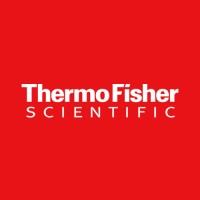CD27 / Qdot 655 / CLB-27/1
Product Details
| Description | CD27 Monoclonal Antibody (CLB-27/1), Qdot™ 655 | |
|---|---|---|
| Conjugate | Qdot 655 | |
| Clone | CLB-27/1 | |
| Target Species | Human | |
| Applications | FC | |
| Supplier | Thermo Fisher Scientific | |
| Catalog # | Sign in to view product details, citations, and spectra | |
| Size | ||
| Price | ||
| Antigen | ||
| Host | ||
| Isotype |
About CD27
The protein encoded by this gene is a member of the TNF-receptor superfamily. This receptor is required for generation and long-term maintenance of T cell immunity. It binds to ligand CD70, and plays a key role in regulating B-cell activation and immunoglobulin synthesis. This receptor transduces signals that lead to the activation of NF-kappaB and MAPK8/JNK. Adaptor proteins TRAF2 and TRAF5 have been shown to mediate the signaling process of this receptor. CD27-binding protein (SIVA), a proapoptotic protein, can bind to this receptor and is thought to play an important role in the apoptosis induced by this receptor. [provided by RefSeq, Jul 2008]
The protein encoded by this gene is a member of the TNF-receptor superfamily. This receptor is required for generation and long-term maintenance of T cell immunity. It binds to ligand CD70, and plays a key role in regulating B-cell activation and immunoglobulin synthesis. This receptor transduces signals that lead to the activation of NF-kappaB and MAPK8/JNK. Adaptor proteins TRAF2 and TRAF5 have been shown to mediate the signaling process of this receptor. CD27-binding protein (SIVA), a proapoptotic protein, can bind to this receptor and is thought to play an important role in the apoptosis induced by this receptor. [provided by RefSeq, Jul 2008]
About Qdot 655
Qdot® 655 from Thermo Fisher Scientific is an inorganic nanocrystal with a surface functionalized to allow antibodies and biomolecules to be cross-linked. It is most efficiently excited between 320-405 nm but is capable of excitation across every laser less than its emission peak. It is significantly brighter and more photostable than traditional organic fluorophores, making it still useful for fluorescence microscopy, however its size and solubility issues make it a challenge to use in flow cytometry. In spectral flow cytometry it may still prove useful due to its very unique spectral characteristics
Qdot® 655 from Thermo Fisher Scientific is an inorganic nanocrystal with a surface functionalized to allow antibodies and biomolecules to be cross-linked. It is most efficiently excited between 320-405 nm but is capable of excitation across every laser less than its emission peak. It is significantly brighter and more photostable than traditional organic fluorophores, making it still useful for fluorescence microscopy, however its size and solubility issues make it a challenge to use in flow cytometry. In spectral flow cytometry it may still prove useful due to its very unique spectral characteristics
Experiment Design Tools
Panel Builders
Looking to design a Microscopy or Flow Cytometry experiment?
Validation References
| PMID 21587208 | |
|---|---|
| PMID 22530008 | |
| PMID 23461589 | |
| PMID 24270546 | |
| PMID 27415008 | |
| Additional Sources |

|
Reviews & Ratings
| Reviews |
|---|
Looking for more options?
1848 CD27 antibodies from over 50 suppliers available with over 169 conjugates.




